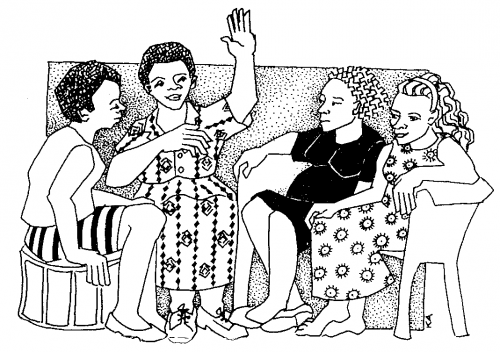The Constitution: Strong Foundation
A truly strong waste pickers’ organisation has a collective leadership that represents its members who are active and make democratic decisions. For all elements to work together an organisation needs clear objectives, structures and rules. It needs policies and procedures. All of these things must be in writing for all members to see and should be formally adopted by the members. This is the organisation’s constitution.
Developing these documents for a new organisation is a big task but it is well worth the time as it will prevent problems in the future. You may already have a constitution but perhaps you want to change it.
The Constitution
The constitution is a set of rules that all members agree on to guide the conduct of the organisation. It is binding on all members, leaders and staff.
The constitution strengthens and guards the organisation’s democracy. Nearly all organisations have conflict at some time but a constitution guides in times of conflict and protects against mismanagement, ill-discipline and corruption.
The constitution stores the organisation’s principles and values and it makes members feel strong. All members must have, or know where to see, a copy and be familiar with it. Sometimes the constitution will need changing and these amendments can be democratically debated and accepted by all members and added into the document.
A new organisation will first need to develop rules to guide its work. This forms the basis of the constitution. Organisers or leaders are important in making sure that members participate in developing the constitution or amending the old one and that everyone knows it. The process of developing a constitution is a powerful tool to educate members and build their confidence and commitment.
A constitution is a legal document so where possible it should be registered with the authorities.
Constitution content
All of the following appear in a constitution:
- Objectives of the organisation
- Who the members are
- How members are represented in the organisation, through what structures and committees
- How often they meet which includes leaders and members
- How leaders report to members
- Who the leaders are
- How leaders are elected
- When and how often leaders are elected – known as term of office
- Leaders’ roles, responsibilities and powers
- Representation of women and women leaders. How many women leaders there should be. (This should not be left to chance.)
- How finances are run and checked
- Discipline and recall of leaders if they are not running the organisation properly.
The constitution should be written simply, clearly and be fully understandable to members.
Tweet


